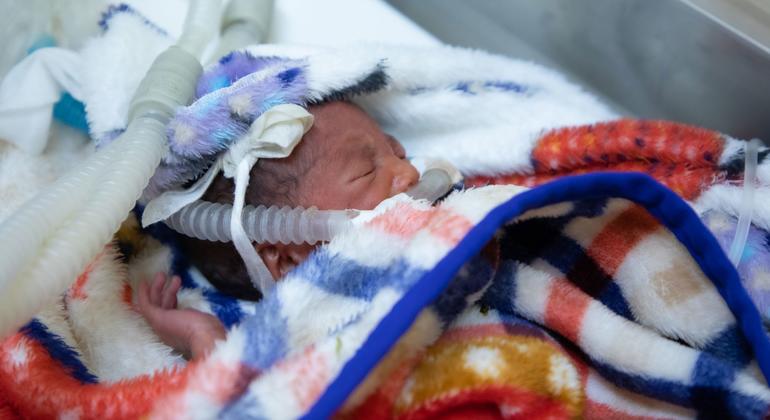An estimated 13.4 million babies were born premature in 2020, with nearly a million dying from pre-term complications, according to Born too soon: Decade of action on preterm birth.
Produced by a range of agencies, including the UN Children’s Fund (UNICEF) and the World Health Organization (WHO), with its Partnership for Maternal, Newborn and Child Health (PMNCH), the report outlines a strategy forward to address this phenomenon, which has been long under-recognized in its scale and severity.
Progress is ‘flatlining’
“Progress is flatlining for maternal and newborn health, as well as the prevention of stillbirths,” PMNCH Executive Director Helga Fogstad said.
Gains made are now being pushed back further through the devastating combination of COVID-19, climate change, expanding conflicts and rising living costs, she warned.
“By working together in partnership – governments, donors, the private sector, civil society, parents, and health professionals – we can sound the alarm about this silent emergency,” she said.
This means bringing preterm prevention and care efforts to the forefront of national health and development efforts, building human capital by supporting families, societies, and economies everywhere, she added.
Born too soon
Preterm birth rates have not changed in any region in the world in the past decade, with 152 million vulnerable babies born too soon from 2010 to 2020, the report showed.
Preterm births occur earlier than 37 weeks of an expected 40-week full-term pregnancy.
The report included updated estimates from WHO and UNICEF, prepared with the London School of Hygiene and Tropical Medicine, on the prevalence of preterm births.
Leading cause of child deaths
Steven Lauwerier, Director of Health at UNICEF, noted that every preterm death, created “a trail of loss and heartbreak”.
“Despite the many advances the world has made in the past decade, we have made no progress in reducing the number of small babies born too soon or averting the risk of their death. The toll is devasting. It’s time we improve access to care for pregnant mothers and preterm infants and ensure every child gets a healthy start and thrives in life.”
Preterm birth is now the leading cause of child deaths, accounting for more than one in five of all deaths of children occurring before their fifth birthday, the report said. Preterm survivors can face lifelong health consequences, with an increased likelihood of disability and developmental delays.
Too often, where babies are born, determines if they survive, the report found, noting that only 1 in 10 extremely preterm babies survive in low-income countries, compared to more than nine in 10 in high-income nations.
A premature baby, who has been in an incubator for almost a month, is monitored closely at a hospital in Iraq.
Gaping inequalities
The report showed gaping inequalities related to race, ethnicity, income, and access to quality care, determine the likelihood of preterm birth, death, and disability, even in high-income countries.
Southern Asia and sub-Saharan Africa have the highest rates of preterm birth, accounting for more than 65 per cent of global cases.
Other factors are also making an impact, increasing risks for women and babies everywhere. For example, air pollution is estimated to contribute to six million preterm births each year, the report showed.
At the same time, nearly one in 10 preterm babies are born in the 10 most fragile countries affected by humanitarian crises, according to a new analysis in the report.
Parent-led activism
Across the world, groups for affected families of preterm birth have been at the forefront of advocating for access to better care and policy change and supporting other families, the report showed.
In addition, the past decade has also seen a growth of community activism on preterm birth and stillbirth prevention, driven by networks of parents, health professionals, academia, and civil society.
Life-saving strategy
UN agencies, including the UN Population Fund (UNICEF), WHO, and UNICEF, are calling for a set of actions to save lives: boost investments in newborn health, accelerate implementation of national policies, integrate efforts across sectors, and support locally led innovation and research to support improvements in quality of care and equity in access.
“Ensuring quality care for these tiniest, most vulnerable babies and their families is absolutely imperative for improving child health and survival,” said Anshu Banerjee, Director for Maternal, Newborn, Child and Adolescent Health and Ageing at WHO.
Progress must also advance in prevention, which means every woman must be able to access quality health services before and during pregnancy to identify and manage risks, she said.
Learn more about what the UN is doing to help here.

